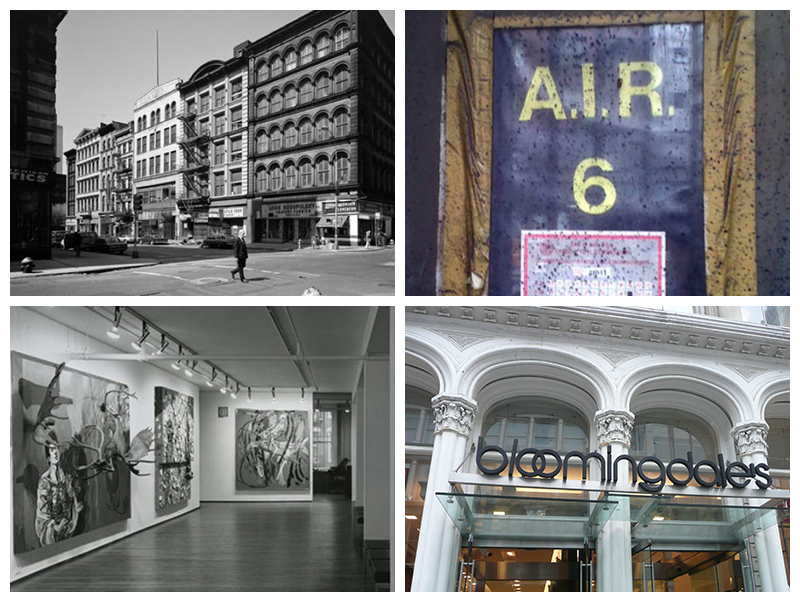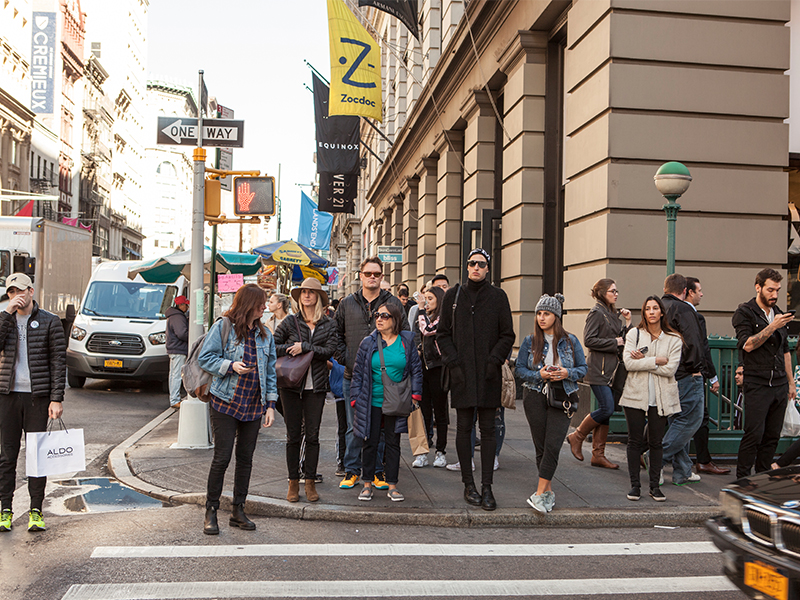
We know zoning is a bit of technical, dare we say nerdy. The City’s zoning regulations play an important role in regulating how real estate and buildings are used.
The goal for the SoHo Zoning Guidebook is to elevate the common understanding of SoHo’s zoning for residents, property owners and businesses who want to meaningfully participate in conversations about the current status and future of the SoHo neighborhood.
While it may not be apparent to a passerby, the mismatch of current zoning regulations to the current uses significantly complicates matters for those who live, work, own, rent or develop property in SoHo. The guidebook provides examples of the SoHo neighborhood’s history and draws particular focus to the conditions along the SoHo Broadway corridor today.
The SoHo Zoning Guidebook was produced in collaboration with a dedicated committee of SoHo Broadway stakeholders, urban planning consulting firm Karp Strategies and the SoHo Broadway Initiative staff. We are excited to share this Guidebook with you.
That sounds like a lot right? Don’t worry SoHo Broadway, we’ve created a very readable guidebook and created this special section of our website to break down this complex subject matter into small bite size sections that are easily digested and won’t give you any of that unwanted heartburn you’ve come to expect when reading about zoning.
Don’t know where to start? Scroll down this page for Chapter Snapshots that gives readers an overview of the guidebook and links to any chapter to read more.
Want to dive right in? Just click the Read the Guidebook link above.
Finished the Guidebook and are ready for more? Click the Resources link above for links to specific resources and reference material sited in the Guidebook.
Only have a few minutes? Check out link to the FAQ link above to find answers to frequently asked questions.
Below are brief snapshots of each chapter of the SoHo Zoning Guidebook. Clicking on a chapter shapshot will take a visitor to the selected full chapter of the Guidebook on the “Read the Guidebook” page.

While walking down Broadway between Houston and Canal Streets in the SoHo neighborhood of Lower Manhattan, one notices flagship stores with familiar names like Uniqlo, Bloomingdale’s, and Nike, as well as smaller shops, buildings with unique cast iron architecture, a hub of media and tech company offices, and residential lofts. The SoHo Broadway corridor’s vibrant mix of uses is cherished by those who live, work, visit, and socialize here. Read the chapter here.

Over the past 75 years, SoHo’s uses shifted profoundly, from predominantly manufacturing to a neighborhood that includes residential, retail, and office uses. This section will briefly outline how the neighborhood has evolved, summarize the regulatory changes that have occurred over the years, and review how the corridor is used today. Read the chapter here.

This section describes relevant and fundamental concepts that makeup New York City zoning. It outlines the role and function of New York City zoning, including a glossary of common zoning terms, to provide context for the subsequent section on the zoning and other regulations specific to SoHo. Read the chapter here.

This section explores the neighborhood’s current zoning as well as the role of SoHo’s historic district designation. It also summarizes uses allowed as-of-right, and other mechanisms a business or resident can employ to locate in SoHo. Read the chapter here.

What are the implications of operating within the current zoning and regulatory framework on stakeholders who live and work on Broadway today? This section examines the answers to that question and the effect on specific stakeholders. Read the chapter here.

The SoHo neighborhood and the Broadway corridor have evolved, and the current zoning no longer reflects what we see in SoHo today. M1-5B zoning was never intended to support the variety of retail, residential, and office uses that now exist along Broadway. Some residents, businesses, and owners have turned to regulatory means to adapt. Others do not comply with the regulations. Uneven enforcement and market forces have encouraged these non-conforming uses to flourish. Read the chapter here.